AWS Startups Blog
Ensuring Your Startup is “Enterprise Ready”
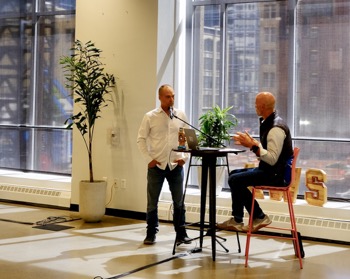 When thinking of two types of businesses that are at odds, startups versus enterprises would be a pair that quickly comes to mind. The free-wheeling attitudes that many founders bring to their new companies, with mantras like “move fast and break things,” do not quite translate to how larger corporations make decisions.
When thinking of two types of businesses that are at odds, startups versus enterprises would be a pair that quickly comes to mind. The free-wheeling attitudes that many founders bring to their new companies, with mantras like “move fast and break things,” do not quite translate to how larger corporations make decisions.
But what if you’re a B2B entrepreneur that serves these enterprises as customers? How do you keep that scrappy spirit often needed to build a company from the ground up while also presenting yourself in a way that is required to close deals with older, established corporations?
These questions, amongst others, were what a handful of early-stage entrepreneurs were looking to learn the answers to at a recent event hosted at the AWS San Francisco Loft. Seven select entrepreneurs from the Y Combinator Startup School, a 10-week online program run by the prolific accelerator, were given the opportunity to stand in front of an enterprise professional in their respective segment and pitch their company, a daunting task for any early founder.
Following the pitches, the AWS Startups team sat down with each company and enterprise representative to understand what went well and what could have been improved upon to help increase the likelihood of the deal moving forward. While there were a variety of industries represented at the event—finance, healthcare, and media—three themes rang true through all conversations.
Lock-in early customers and focus on your strengths
Enterprises, by nature, are risk averse. You may remember the early-tech saying that “Nobody gets fired for buying IBM”, which embodies that spirit to-a-tee. Why take a risk on a new product when you could choose the proven system?
To mitigate this risk, larger companies often use the follower model of not being the first to sign on, per John Finley, Head of Innovation at Bank of the West. For entrepreneurs, that means hooking smaller fish and showcasing those wins in your pitch when trying to land the whale.
That said, if you’re early in your customer acquisition process, it can still be tough to even convince smaller companies to give you a chance. In those cases, AWS BD Manager and previous founder Noah Shanok suggests highlighting the team’s background and expertise. Focus on why you are the best people to build this startup and why they can depend on the group of people you’ve assembled.
Customize your pitch for each audience
Along with de-risking the sales proposition, it’s also important to take into account who the audience of the pitch is, a point that was raised by Eli Groban, Director of Innovation at the publicly-traded biotech company Thermo Fisher. Each person has pain points they’re trying to solve for, and positioning your product and presentation in a way that showcases how you can help with their specific needs can really move the needle.
It’s also important to understand that the team or person you’re pitching is likely resource constrained. Groban pointed out that he’d love to solve for every problem him and his team face right now, but things must be prioritized.
To achieve all these things, Groban broke his ideal pitch into three categories: 1. Understanding and stating the pain point 2. Communicating how you fix it 3. Explaining why this needs to be done now.
Prepare for the long haul
While taking all of the above advice into account can help you be more successful when pitching an enterprise, another point to keep in mind is that these deals just take time. Large corporations often have layers and layers of checks and balances that need to be sorted before a deal can be pushed through.
To keep expectations level, it’s good to just be upfront early in the pitching process. Talking through what their team’s budget currently looks like and how it cycles can help you get a better understanding of how likely they are to convert, and when. For reference, and depending on your industry, we can be talking years, not months, for a deal to get from intro to closing.
Meet the companies
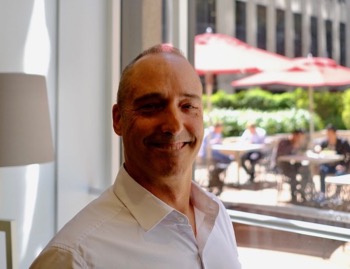 Fract Analytics – Mike Mack, CEO
Fract Analytics – Mike Mack, CEO
Fract Analytics helps your bank manage, geocode, and understand the lending data required for compliance with the Community Reinvestment Act, which is designed to make sure they do not discriminate against low-income populations when providing financial services.
“While banks are legally required to show that they are not being discriminatory, that doesn’t mean it’s a piece of cake to sell them on our solution. Talking with and pitching John Finley helped us understand how important it is to customize the pitch, in order to reach our next goal: booking a pilot with bank.“
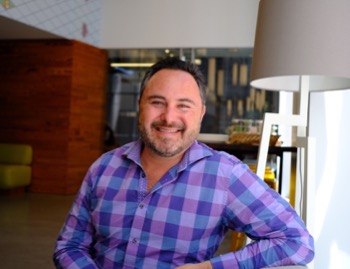
CARTERA777 – Nathan Zeke, CEO & Founder
CARTERA777 offers cannabis companies and consumers the ability to send and receive frictionless payments.
“Our customers currently are event organizers, with the end goal being CARTERA777 enabling the sales at these events. A strategy we’ve seen success with is securing customers first, and then building a solution for their specific needs.“

Arcadia Blockchain Technologies – Bryan Nguyen, CFO & Co-founder
Arcadia’s software platform is designed to enable NGOs and other aid organizations to offer peer-to-peer financial services to refugees.
“At Arcadia Blockchain Technologies, we’re working to build an ecosystem where anyone can transact with one another and no one is excluded. A main hurdle we’ve encountered is just getting our foot in the door with NGOs, who are a bit of an elite group. We’ve seen some success in throwing events and hosting panels with them though, with the idea being those relationships develop into partnerships.”
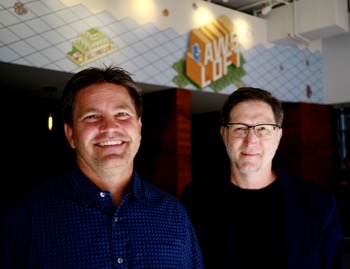
Trustium – Cedar Milazzo (left), CEO & Co-founder, and Bill Skeet (right), VP of Product & Co-founder
Trustium works to identify fake news, conspiracy theories, and other misinformation via AI to protect brands by allowing them to avoid advertising on those pages.
“Having launched two months ago, our main focus is securing some paying customers. This event was great since Noah perfectly fits our target customer profile, making his feedback was invaluable. We’ve done good job in building a prototype; next steps are tuning our pitch for each specific audience.”

ConnectMD – Steve Derico, Developer & Co-founder
ConnectMD offers a mobile-first platform that makes it easier for doctors to ensure their patients are properly prepared leading up to a surgery, decreasing recovery times, complications, and cancellations.
“Coming into this event we had a good idea of what problem we were solving, but what we were a bit unclear on is who would pay to have that problem solved. We initially had been targeting hospital front offices, but will be switching our efforts to insurance companies based upon the feedback we got from Eli.”
 Regulytica – Erica Livingston, Founder
Regulytica – Erica Livingston, Founder
Regulytica is a platform that automates much of the manual process that is currently needed to ensure medical devices are FDA compliant.
“Having experienced this problem first hand, I set out to build a product that will cut down the 8-10 hour process needed for each new medical device. One takeaway we got was the need to thoroughly understand the competitive landscape. While I have a good handle on what’s out there from working in the industry, Eli was able to offer up one company that may compete with us that I hadn’t heard of before.”
 Veriteos – Kyloon Chuah, CEO & Co-founder
Veriteos – Kyloon Chuah, CEO & Co-founder
Veriteos helps companies in clinical trials automate data-verification processes for regulatory compliance.
“Pitching Eli was really great in helping us better understand how to position ourselves against what’s already out there. Drug development is huge market, so it’s important to standout and be differentiated. For us, that means highlighting how we’re taking a software-first approach versus just applying technology to existing processes”
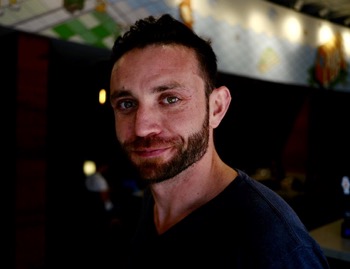 Plenty – Dylan Frazao, Founder and Head of Creative
Plenty – Dylan Frazao, Founder and Head of Creative
Plenty is building financial tools for people with irregular income.
“We believe that the current set of financial tools were built to service a previous generation of 9-5 workers. Today, people are adopting methods of work that are irregular and harder to track, which is where Plenty comes in. John gave me some great advice around how to pitch fintech professionals, specifically that I could focus less on explaining the problem we’re solving, since they’re likely familiar, and instead focus on how we’re solving it.”